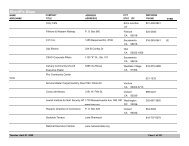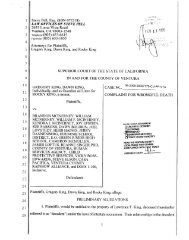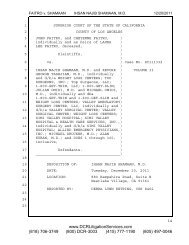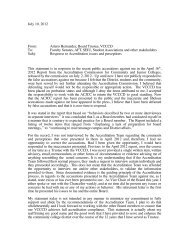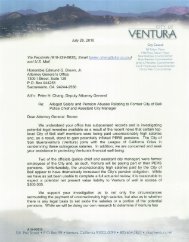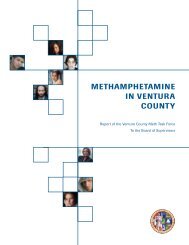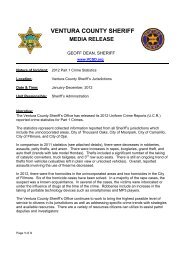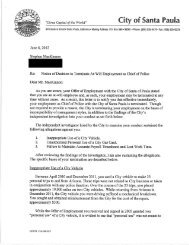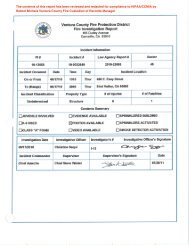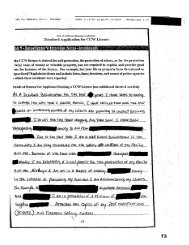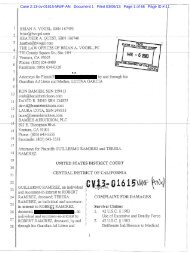Metrolink peer review report - Ventura County Star
Metrolink peer review report - Ventura County Star
Metrolink peer review report - Ventura County Star
Create successful ePaper yourself
Turn your PDF publications into a flip-book with our unique Google optimized e-Paper software.
METROLINK COMMUTER RAIL SAFETY PEER REVIEW PANEL<br />
Final Report – January 5, 2009<br />
Issue Papers<br />
There is a need for the staff to spend more time overseeing turnaround maintenance at the six to seven outlying<br />
points where layover maintenance, cleaning, toilet dumping, etc. is performed. Currently this oversight is<br />
provided by one of the compliance officers at CMF. These facilities are located at:<br />
• Lancaster - end of Antelope Valley Line<br />
• Montalvo - end of <strong>Ventura</strong> Line<br />
• Moorpark - on <strong>Ventura</strong> Line<br />
• San Bernardino – end of San Bernardino Line<br />
• Riverside, North Side<br />
• Riverside, South Side<br />
• Oceanside – This facility is in San Diego and is operated by Coaster (North <strong>County</strong> Transit District).<br />
The contractor assigns the senior technician at each of these sites to general supervision. A senior supervisor<br />
rotates among the different sites to conduct employee oversight.<br />
In order to oversee performance of the maintenance contractor properly with the current fleet of equipment, at<br />
least three or four compliance officers are needed. Currently there are two compliance officers. Of those, one has<br />
additional responsibilities, and is also training the second. As the fleet expands, additional compliance officers<br />
will be needed.<br />
The equipment department has developed equipment training programs and guides for training the operating<br />
personnel on the rail equipment and how to handle on-line problems (such as cutting out a door engine or a<br />
traction motor, and determining if the correct one has been cut out -- all in accordance with CFR Title 49, Part<br />
238), but these have not generally been used. We encountered among the equipment staff an observation that<br />
transportation staff (i.e., train engineers) does not know how to use the equipment optimally; correspondingly,<br />
when there is an on-line failure; the train crew often does not know how to physically isolate the problem under<br />
guidance from the dispatcher.<br />
At present, it appears that there is not a fully defined and effective QMP position established at the dispatching<br />
center or elsewhere that can be contacted in case of on-line failures or malfunctions. In some cases, a decision<br />
needs to be made regarding the equipment failure and the safe operation or recall of the equipment. The FRA<br />
identifies the QMP as the person who makes safety critical decisions as to how, or if, equipment may continue in<br />
revenue service with running gear defects. Without the proper identification of operating components that may<br />
not be working properly, properly, safety decisions about the continued movement of that equipment are<br />
hampered.<br />
Regarding document control, while the active files appear to contain) maintenance records for the past four years;<br />
it is not known how the older documents are handled. Certainly all documents should be scanned and placed into<br />
PDF, or archived in some other electronic format, shortly after being generated and archived.<br />
46



